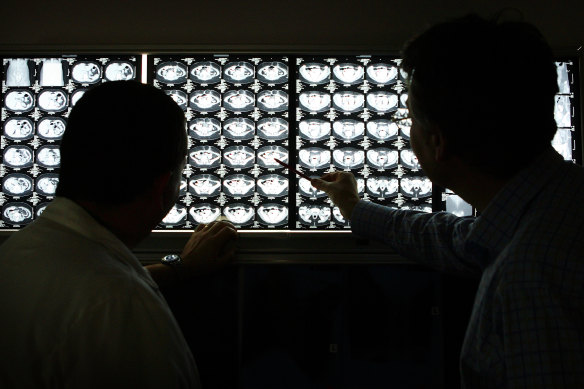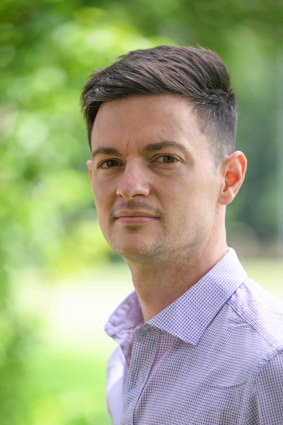The profession that costs more than $45,000 to join

Save articles for later
Add articles to your saved list and come back to them any time.
Key points
- The Royal Australian and New Zealand College of Radiologists raised the cost of its final trainee exam from $5718 in 2022 to $10,200 in 2023, just months after introducing a mandatory $6000 “admission to fellowship” fee for all new radiologists.
- More than 400 senior and trainee radiologists signed on to two open letters to the college. One signatory said the fee hike would drive junior doctors away from the profession.
- Australian Medical Association president Steve Robson issued a stern warning to medical colleges, saying they needed to be more transparent about how they set training fees.
Australia’s peak body for doctors has issued a stern warning to medical colleges after hundreds of radiologists rebelled against their college’s decision to hike fees for trainees, fearing rising training costs will drive talent away from the profession and worsen mounting backlogs.
The Royal Australian and New Zealand College of Radiologists (RANZCR) raised the cost of its final trainee exam from $5718 in 2022 to $10,200 in 2023, just months after introducing a mandatory $6000 “admission to fellowship” fee for all new radiologists.
Senior radiologists are concerned an increase in training fees will drive junior doctors away from the profession, exacerbating a national shortage of radiologists. Credit: Jessica Shapiro
More than 400 senior and trainee radiologists signed two open letters to the college, describing the increases as “disproportionate and deeply unfair”.
Multiple radiology trainees, who spoke to this masthead but did not want to be identified because the college controlled their training, said the fee increases meant they would now pay more than $40,000 for the five-year training program – on top of their university debt.
Sam, a third-year trainee in Sydney, said the fee increase came without warning and meant he was now scrambling to find an additional $11,000 to complete his training.
Most trainees spend several years as junior doctors in the public system before specialising, and already have student loan debts from university. College training fees are not part of the HECS scheme and must be paid upfront and in full.
The college’s president, Clinical Associate Professor Sanjay Jeganathan, said members were still paying for the significant financial cost of delivering exams during COVID-19.
“RANZCR is not immune to inflationary pressures, which continue to impact the overall costs of delivering quality training and examinations,” he said. “The fees that trainees currently pay do not meet these costs, and they continue to be subsidised by RANZCR members.”
Steph, a final-year trainee, said it was unclear where the cost increases had come from, considering some assessments had been moved from in-person to online exams.
Interventional radiologist Matt Lukies is one of more than 400 radiologists who signed an open letter criticising the fee hikes.Credit: Joe Armao
“You’re using your own computer, your own internet, your own electricity … they no longer have to fly anyone anywhere to examine you,” she said. “It’s just unclear where all this money is going.”
Australian Medical Association president Steve Robson said medical colleges needed to be more transparent about how they set training fees, and hoped the rules would be tightened in the Australian Medical Council’s review of accreditation standards which come into effect next year.
“Fee transparency for specialist vocational training is vital,” he said. “While the colleges have an undisputed right to set their own training fees, transparency of fee structures is a constant source of concern from trainees.”
Dr Matthew Lukies, an interventional radiologist with Alfred Health in Melbourne who signed the open letter, said saddling young doctors with increased fees would “drive talent away and threaten our craft”.
“The goodwill that created the environment for people like me to train should not be set aside,” he said.
Hanna Szewczyk, the chair of the AMA’s Council of Doctors in Training, said the problem of rising training costs was not isolated to radiology and would “limit doctors from less-advantaged backgrounds pursuing these specialties”, therefore making the professions less representatives of the communities for which they provide care.
A worldwide shortage of radiologists has been blamed for backlogs at Gold Coast University Hospital and Sydney’s Concord Hospital, where more than 50,000 diagnostic images are yet to be examined by a radiologist.
The Morning Edition newsletter is our guide to the day’s most important and interesting stories, analysis and insights. Sign up here.
Most Viewed in National
From our partners
Source: Read Full Article

